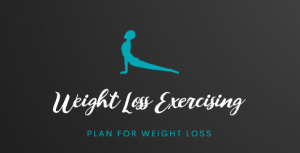Are you looking to shed some extra pounds and wondering which type of cardio workout is most effective at burning fat? The ongoing debate between high intensity and low intensity cardio has left many fitness enthusiasts in a state of confusion. In this article, we will break down the benefits and drawbacks of each type of workout, allowing you to make an informed decision about which one is right for you. Whether you prefer to push yourself to the limit or opt for a more relaxed pace, we’ve got you covered. Get ready to ignite your metabolism and discover the answer to the age-old question: high intensity cardio vs low intensity – which burns more fat?
Review contents
Benefits of High Intensity Cardio
Increases metabolism
High intensity cardio exercises, such as HIIT (High Intensity Interval Training), have been proven to significantly increase metabolism. When you engage in high intensity cardio, your body works harder to meet the energy demands, causing your metabolism to spike. This increased metabolic rate can last for hours after your workout, meaning you continue to burn calories even when you’re at rest. The boost in metabolism from high intensity cardio can help you reach your weight loss goals more efficiently.
Burns more calories
One of the key benefits of high intensity cardio is its ability to burn a higher number of calories in a shorter amount of time. This is due to the increased effort and intensity of these workouts. By pushing yourself to your limits during high intensity cardio, you can effectively burn calories and contribute to a calorie deficit, which is essential for weight loss. In fact, studies have shown that high intensity cardio can burn up to 30% more calories than low intensity cardio exercises.
Improves cardiovascular health
High intensity cardio exercises are known to improve cardiovascular health by challenging and strengthening your heart and lungs. When you engage in high intensity workouts, your heart rate increases, leading to improved blood circulation and oxygen delivery throughout your body. This increased demand on your cardiovascular system helps enhance its efficiency and can reduce the risk of heart disease and other cardiovascular conditions. Regular high intensity cardio can also improve your endurance and overall fitness level.
Benefits of Low Intensity Cardio
Boosts fat metabolism
While high intensity cardio may burn more calories, low intensity cardio exercises also have their own set of benefits. Low intensity cardio, such as steady-state jogging or walking, focuses on using fat as a primary source of fuel. During low intensity workouts, your body primarily uses fat for energy, which can help boost fat metabolism over time. This is especially beneficial for individuals looking to lose body fat while preserving muscle mass.
Promotes recovery
Low intensity cardio is a great option for active recovery days. When your body is sore or fatigued from high intensity workouts, incorporating low intensity exercises can aid in recovery and reduce muscle soreness. The gentle movements and lower impact nature of low intensity cardio can help flush out metabolic waste, increase blood flow to your muscles, and promote healing. By adding low intensity cardio to your routine, you give your body a chance to recover and perform better during subsequent high intensity workouts.
Suitable for beginners and those with physical limitations
Low intensity cardio is an excellent starting point for beginners or individuals with physical limitations. The lower impact nature of these exercises reduces the risk of injury and allows individuals to gradually build up their fitness level. Whether you’re recovering from an injury, have joint issues, or are simply new to exercise, low intensity cardio can provide the perfect introduction to physical activity. It allows you to improve your cardiovascular health without placing excessive stress on your body.
Factors to consider for fat burn
Calorie expenditure
The number of calories you burn during a workout is an important factor to consider when focusing on fat burn. It’s generally believed that a higher calorie expenditure is more conducive to fat loss. This is where high intensity cardio has an advantage. Due to its increased intensity and demand on your body, high intensity workouts tend to burn more calories compared to low intensity exercises.
Duration of exercise
The duration of your exercise sessions also plays a role in fat burn. While high intensity cardio is typically shorter in duration, it can still be effective for fat loss due to its greater calorie burn. Conversely, low intensity cardio exercises are often longer in duration, allowing you to sustain the activity for an extended period of time. This can be beneficial for individuals who prefer a more gradual approach to fat loss or those who have time constraints.
Afterburn effect
Another factor to consider for fat burn is the afterburn effect, also known as Excess Post-Exercise Oxygen Consumption (EPOC). This refers to the elevated calorie burn that occurs after you’ve finished your workout. High intensity cardio has been shown to have a greater afterburn effect compared to low intensity cardio. This means that after a high intensity workout, your body continues to burn calories at an elevated rate for a longer period of time, supporting fat loss efforts.
Calorie Expenditure
Explanation
Calorie expenditure refers to the number of calories burned during a specific activity or workout. It is an important factor to consider when aiming for fat burn. The more calories you burn, the greater the potential for weight loss. High intensity cardio, such as sprinting or high intensity interval training, involves high-intensity bursts of activity that require significant energy expenditure. This leads to a higher calorie burn compared to low intensity cardio exercises, such as walking or gentle cycling.
Comparison of high and low intensity cardio
When comparing high intensity cardio and low intensity cardio in terms of calorie expenditure, high intensity workouts typically come out on top. For example, a 30-minute high intensity interval training session can burn significantly more calories than a 30-minute low intensity steady-state jog. This is due to the higher intensity and energy demands of high intensity cardio exercises. However, it’s important to note that individual factors such as weight, fitness level, and intensity of the workout can also impact calorie expenditure.
Duration of Exercise
Effect on fat burn
The duration of your exercise session can influence the amount of fat burn you achieve. Both high intensity cardio and low intensity cardio have their own effects on fat burn based on their duration. High intensity cardio workouts are typically shorter in duration, ranging from 15 to 30 minutes. Despite their shorter length, these workouts can still be effective for fat loss due to their high intensity and calorie burn. On the other hand, low intensity cardio exercises are often longer in duration, lasting anywhere from 30 to 60 minutes or more. These longer sessions allow you to sustain the activity for a longer period of time, potentially leading to greater fat burn.
Comparison of high and low intensity cardio
When comparing the fat burn potential of high intensity cardio and low intensity cardio based on duration, it’s important to consider the individual’s goals and preferences. High intensity cardio can be a time-efficient option for those with a busy schedule, as you can achieve a substantial calorie burn in a shorter amount of time. On the other hand, low intensity cardio may be more suitable for individuals who prefer longer, steady-state workouts or have the time available to commit to such sessions. Both options can contribute to fat burn, so it ultimately depends on personal preferences and lifestyle.
Afterburn Effect
Explanation
The afterburn effect, scientifically known as Excess Post-Exercise Oxygen Consumption (EPOC), refers to the elevated calorie burn that occurs after you’ve finished your workout. This phenomenon happens because your body needs to replenish oxygen stores, repair damaged tissues, and return to its pre-exercise state. High intensity cardio exercises generally elicit a greater afterburn effect compared to low intensity cardio workouts. This means that even after you’ve finished your high intensity workout, your body continues to burn calories at an elevated rate.
Comparison between high and low intensity cardio
When it comes to the afterburn effect, high intensity cardio clearly has the upper hand. Studies have shown that high intensity interval training (HIIT) can significantly increase EPOC, resulting in a higher calorie burn post-workout. This extended calorie burn can last for several hours, depending on the intensity and duration of the high intensity cardio session. On the other hand, low intensity cardio exercises typically have a lower afterburn effect. While they may not provide the same immediate calorie burn as high intensity workouts, they still contribute to overall fat burn and cardiovascular health.
Impact on Metabolism
EPOC (Excess Post-Exercise Oxygen Consumption)
EPOC, or the afterburn effect, not only contributes to increased calorie burn, but also has a direct impact on your metabolism. After intense workouts, your body experiences a temporary increase in metabolism as it works to restore its oxygen levels and repair the damage caused by exercise. This metabolic boost from the afterburn effect can have long-term effects on your metabolism, potentially leading to increased calorie burn even at rest.
Long-term effects
Consistently engaging in high intensity cardio can have long-term effects on your metabolism. By regularly challenging your body with intense workouts, you can help increase your basal metabolic rate (BMR), which is the number of calories your body burns at rest. Over time, this can contribute to sustainable weight loss and improved body composition. While low intensity cardio may not have the same immediate impact on metabolism as high intensity cardio, it can still provide metabolic benefits over time, especially when combined with other forms of exercise.
Effectiveness for Weight Loss
Comparison of high and low intensity cardio
Both high intensity cardio and low intensity cardio can be effective for weight loss, but they achieve results through different mechanisms. High intensity cardio is known for its ability to burn more calories in a shorter amount of time, making it a more efficient option for those with limited availability. On the other hand, low intensity cardio can contribute to weight loss by promoting fat metabolism and providing a sustainable form of exercise. In order to maximize weight loss results, it may be beneficial to incorporate a combination of both high and low intensity cardio into your fitness routine.
Dietary considerations
While cardio exercises play a significant role in weight loss, it’s important to remember that diet also plays a crucial part in achieving your goals. Regardless of whether you choose high intensity cardio or low intensity cardio, maintaining a balanced and nutritious diet is essential for weight loss. Aim to consume a calorie deficit by incorporating lean proteins, fruits, vegetables, whole grains, and healthy fats into your meals. By pairing a well-rounded diet with regular cardio exercise, you can optimize your weight loss journey and achieve sustainable results.
Impact on Cardiovascular Health
Improvements through high intensity cardio
High intensity cardio has numerous benefits when it comes to cardiovascular health. By engaging in intense, cardiovascular exercises, you can strengthen your heart and lungs, ultimately improving their efficiency. Over time, this can lead to a reduced risk of cardiovascular diseases, such as heart disease and high blood pressure. Additionally, high intensity cardio can enhance your endurance and overall cardiovascular fitness, allowing you to perform daily activities with greater ease and stamina.
Benefits of low intensity cardio
While high intensity cardio is touted for its cardiovascular benefits, low intensity cardio should not be overlooked. Low intensity exercises, such as walking, swimming, or light cycling, can still provide cardiovascular health benefits, especially for individuals with physical limitations or those recovering from injuries. These exercises can help maintain and improve heart health, boost circulation, and improve overall cardiovascular function. Low intensity cardio is also an excellent option for active recovery days or as a starting point for beginners.
Considerations for Beginners
Gradual progression
If you’re new to exercise or have been inactive for a while, it’s important to start with a gradual progression. This applies to both high intensity cardio and low intensity cardio. Gradually increasing the intensity, duration, or frequency of your workouts can help prevent overexertion and reduce the risk of injuries. Begin with shorter, less intense sessions and gradually build up your fitness level over time. It’s important to listen to your body and give yourself enough time to adapt before moving on to more intense workouts.
Avoiding overexertion
Pushing your limits and challenging yourself during workouts is important for improvement, but it’s equally important to avoid overexertion. Overexertion can lead to burnout, injuries, and setbacks on your fitness journey. Pay attention to your body’s signals and take breaks when needed. If you’re feeling fatigued or experiencing excessive discomfort, it’s a sign that you may be overdoing it. Remember that rest and recovery are just as important as the workouts themselves.
Choosing suitable exercises
For beginners and individuals with physical limitations, it’s important to choose exercises that are suitable and safe. Low impact cardio exercises, such as walking, swimming, or using an elliptical machine, are often more gentle on the joints and can be easier to perform. These exercises allow you to gradually build up your fitness level without placing excessive stress on your body. Additionally, consulting with a healthcare professional or certified fitness trainer can provide guidance on suitable exercises and help tailor a workout plan to your specific needs and goals.
In conclusion, both high intensity cardio and low intensity cardio have their own unique benefits when it comes to fat burn, metabolism, weight loss, and cardiovascular health. High intensity cardio is known for its ability to increase metabolism, burn more calories, and improve cardiovascular fitness. On the other hand, low intensity cardio focuses on fat metabolism, promotes recovery, and is suitable for beginners and those with physical limitations. When determining the most effective approach, it’s important to consider factors such as calorie expenditure, duration of exercise, afterburn effect, impact on metabolism, effectiveness for weight loss, and impact on cardiovascular health. By incorporating a combination of high and low intensity cardio, along with a balanced diet, you can reach your fitness goals and improve your overall well-being. Remember to start at your own pace, listen to your body, and gradually progress towards higher intensity workouts.




























